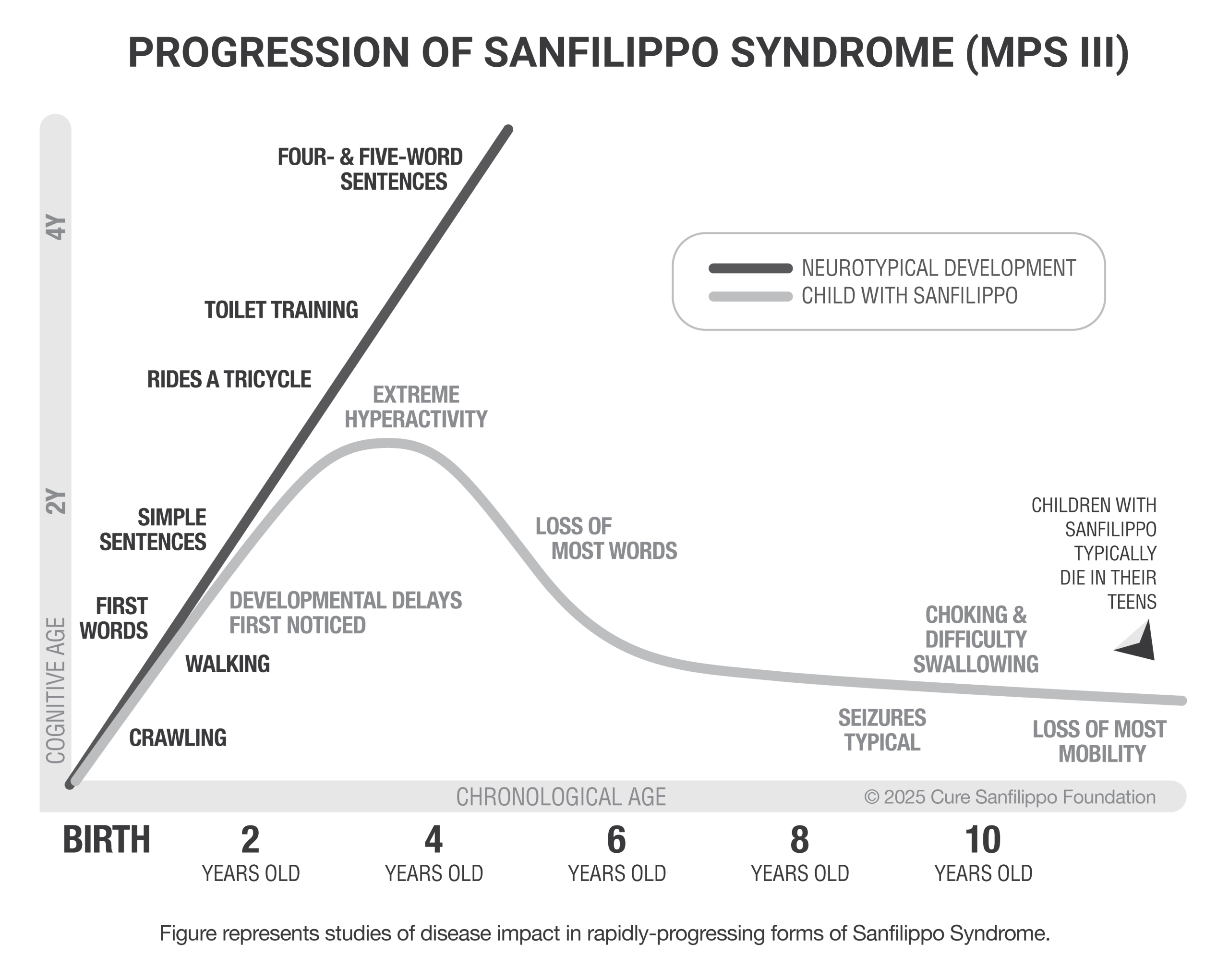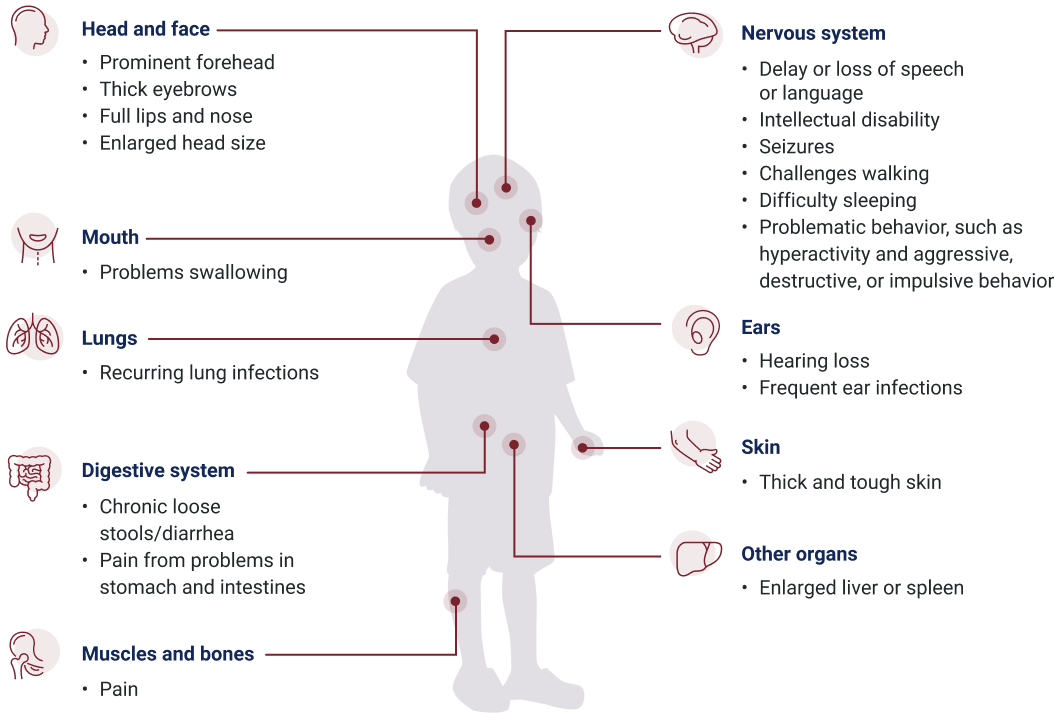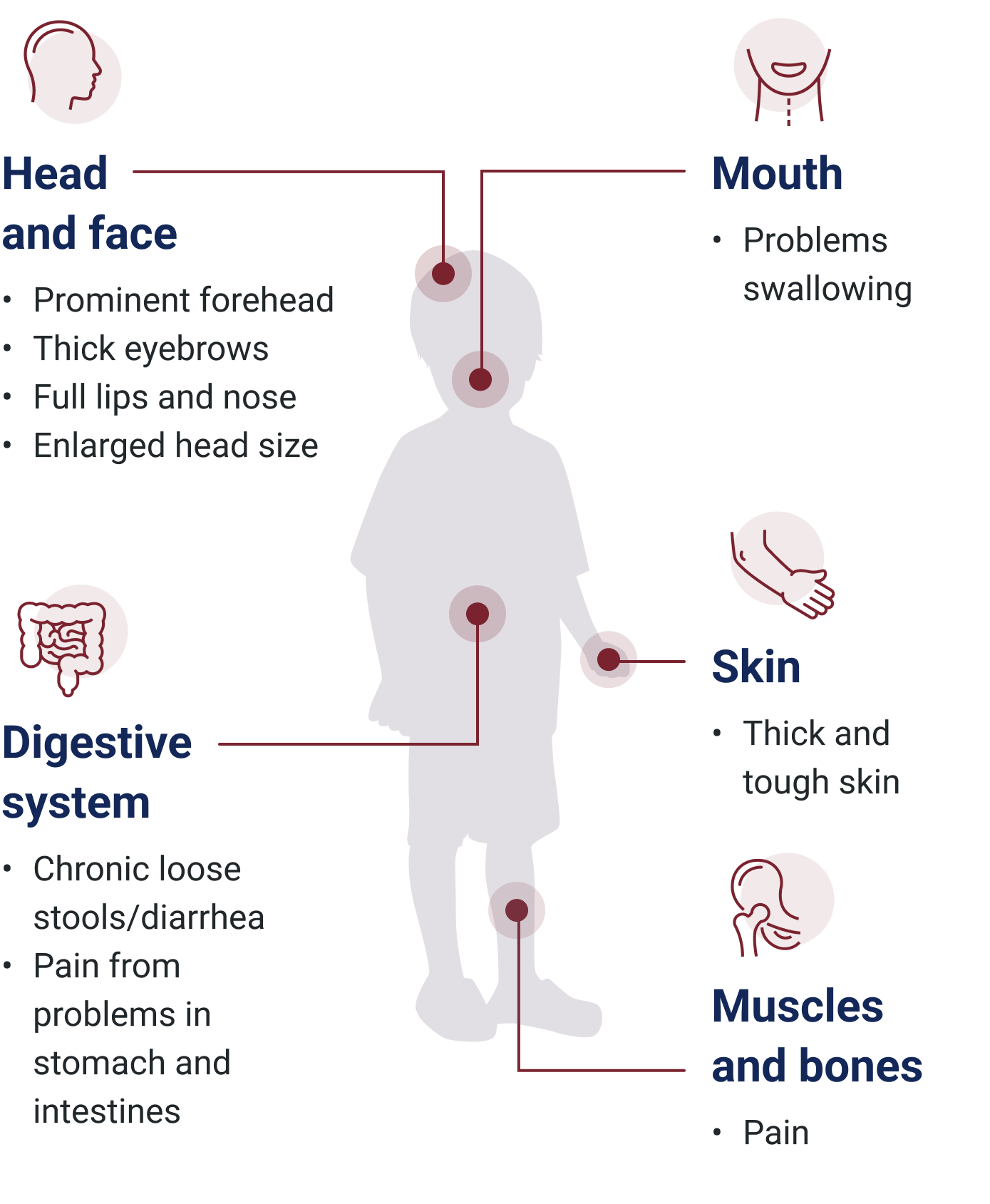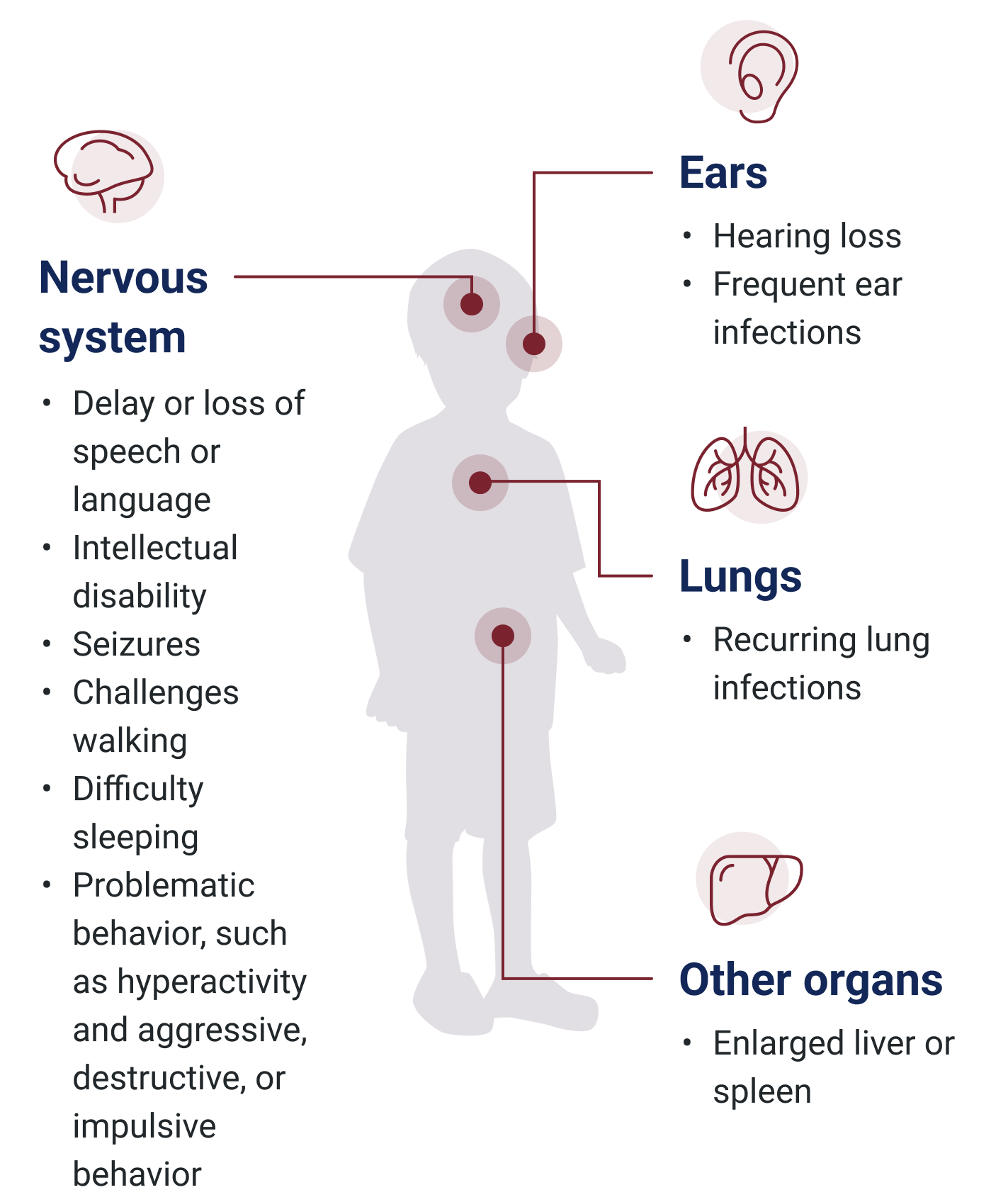Mucopolysaccharidosis type IIIA (MPS IIIA; also known as Sanfilippo syndrome type A) can present in many ways, at different ages, and may change over time. Because of these effects on brain and body, MPS IIIA is often called “childhood dementia.”

MPS IIIA is considered the most severe type of MPS III and the one that progresses most rapidly. How MPS III develops over time can vary significantly from one child to the next.
Figure created by and used with permission of Cure Sanfilippo Foundation.
The signs and symptoms of MPS IIIA appear over time, with the earliest often becoming noticeable between 1 and 6 years of age.
- Though signs of MPS IIIA may be present at birth, they can go unnoticed
- As early as 2 years of age, development tends to slow down and often stops
- After 3 years of age, skills may be gradually lost, including the abilities to speak, walk, and feed themselves. Behavioral issues and sleeping problems may also start to occur
- People with MPS IIIA generally have a life expectancy of around 10 to 20 years





